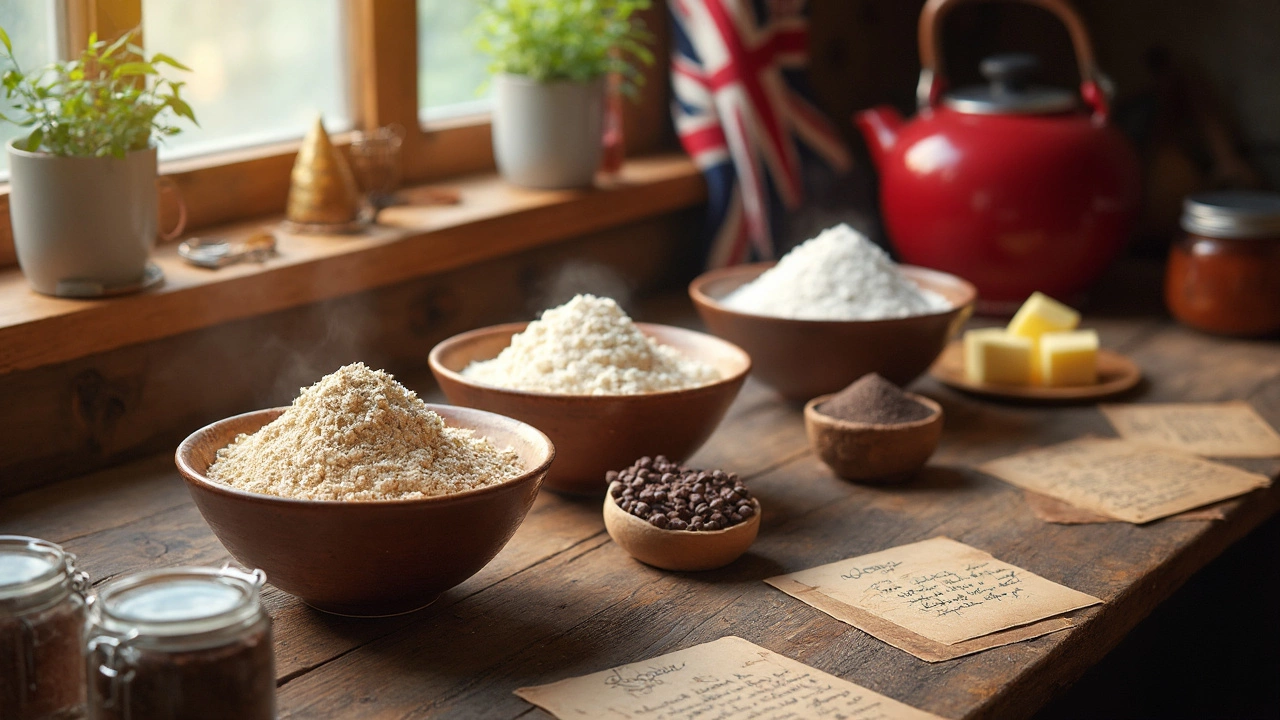
Cookies might seem simple—just flour, sugar, butter, and eggs—but there’s a reason people can’t stop eating them. You don’t need a culinary degree to whip up homemade cookies that taste amazing. All it takes is a few staple ingredients (most of them are probably already in your kitchen) and a little understanding of what makes a cookie… well, a cookie.
Each step, from mixing to baking, really does affect the final treat. Tossing in cold butter instead of soft? You’ll get chunkier, taller cookies. Forgot to chill your dough? Get ready for flat pancakes instead of chewy bites. Knowing these tricks can mean the difference between an okay cookie and one that totally disappears minutes after coming out of the oven.
- What Exactly Is a Cookie?
- Classic Cookie Ingredients Explained
- How Cookies Bake: The Science You Can Taste
- Cookie-Baking Hacks Nobody Told You
- How to Store and Keep Cookies Fresh
- Cookie Culture: Weird Facts & Must-Try Variations
What Exactly Is a Cookie?
When you bite into a homemade cookie, you’re getting a sweet, handheld baked good, usually smaller than your palm, with a slightly crispy or chewy texture. Cookies are a type of dessert, but they’re not the same as cakes or brownies—mostly because of the dough and the way they’re baked. They hold their shape, and most don’t need fancy fillings or frostings to taste good.
Cookies started out as little test bits of cake batter—bakers in ancient Persia, around the 7th century, would cook a tiny spot of batter in the oven to check the temperature. That little tester stuck around and eventually became what we all gobble up today. Fast forward to now, cookies are everywhere. Americans alone eat about 2 billion cookies a year, according to a recent bakery industry report. That’s a lot of cookie basics!
A cookie is usually a mix of flour, sugar, fat (like butter), eggs, and something for flavor. Toss in chocolate chips or oatmeal, and you have endless options. Some famous types are:
- Chocolate chip cookies (the classic crowd-pleaser)
- Peanut butter cookies (the ones with the crisscross fork marks)
- Snickerdoodles (rolled in cinnamon sugar for extra kick)
- Oatmeal raisin cookies (chewy and wholesome, even if some people treat raisins like villains)
What really sets cookie recipes apart is how customizable they are. Swap sugar for honey, add nuts, skip the eggs… there’s wiggle room everywhere. Unlike bread, cookies don’t need yeast or long rising times. Just mix, bake, and eat. It’s instant baking satisfaction.
Classic Cookie Ingredients Explained
If you peek at almost any homemade cookies recipe, you’ll see the same lineup: flour, sugar, butter, eggs, and usually something extra like chocolate chips. Here’s the lowdown on each one and why your batch needs them.
- Flour holds everything together. Most homemade cookies call for all-purpose flour. Swap for cake or bread flour, and you’ll mess with the texture—cake flour makes things soft, bread flour a bit chewy.
- Sugar sweetens, but it also makes cookies spread and get that crispy edge. Brown sugar adds a little chewiness because of the molasses in it. Want your cookies thick and chewy? Use more brown sugar. Want them thin and crisp? Use mostly white sugar.
- Butter brings the rich flavor and helps give cookie basics that soft center. Cold vs. melted butter isn’t just nitpicking. Cold butter makes thicker cookies; melted butter makes them chewy and more spread out.
- Eggs work as glue and add moisture. More yolks mean softer, fudgier cookies. Most standard batches use one large egg for every cup of flour.
- Leavening agents like baking soda or baking powder are how cookies puff up instead of coming out as bricks. Baking soda is best if your dough has something acidic (like brown sugar). Baking powder gives an extra lift without any acid.
Chocolate chips, nuts, dried fruit—they’re just the fun stuff. You can mix things up, but the base formula is always those same must-have cookie basics.
Check out how the most-used ingredients stack up in classic American chocolate chip cookies:
| Ingredient | Typical Amount (per batch) |
|---|---|
| All-purpose flour | 2 1/4 cups |
| White sugar | 1/2 cup |
| Brown sugar | 1 cup |
| Butter | 1 cup (2 sticks) |
| Eggs | 2 large |
| Baking soda | 1 tsp |
| Salt | 1/2 tsp |
| Chocolate chips | 2 cups |
Stick to the basics, but don’t be afraid to try tweaks! A pinch of salt on top before baking, or swapping chocolate chips for chopped candy, can totally change the game.
How Cookies Bake: The Science You Can Taste
Ever wondered why your homemade cookies can turn out crispy, chewy, or even cakey? It's not magic—it's plain old kitchen science. When your dough hits the oven, a whole lot of stuff starts happening at once. First, the butter melts. That makes the dough spread and helps those sugar crystals dissolve a bit. If you see a puddle forming, it probably means there was too much butter or not enough flour. The more the dough spreads, the thinner and crispier your cookie turns out.
As it heats up, the baking soda or baking powder kicks in. These help the cookie rise by creating tiny bubbles. That's what gives the cookie lift and stops it from turning into a flat disc. Pretty cool, right? Once the cookies hit about 310°F, the outside starts browning—that’s the Maillard reaction in action. This gives cookies their golden color and toasty flavor.
The eggs are the glue. They hold everything together and add chewiness. Take the eggs out and your cookies are crumbly, almost like shortbread. Sugar isn’t just for sweetness—it pulls in moisture and keeps the cookies soft. Swap out white sugar for brown sugar, and you'll notice a deeper flavor and chewier texture.
"Cookie chemistry is all about timing and temperature," says Shirley Corriher, food scientist and author of 'BakeWise.' "A single minute or a few degrees can make a huge difference in the end result."
There are some practical numbers behind all this, too. Check out how oven temperature affects basic cookie recipe results:
| Oven Temp (°F) | Texture | Spread |
|---|---|---|
| 325 | Soft, thick | Less |
| 350 | Chewy, balanced | Moderate |
| 375 | Crispy edges | More |
If you're looking for cookies that are perfectly chewy, bake at 350°F and pull them out when the edges are set but the middle still looks soft. Want crispy? Try 375°F, but keep an eye on them—they go from golden to burnt really fast.
The bottom line: Every ingredient and every minute in the oven changes your cookie basics. Once you understand the science, you can tweak your own cookies recipe until it's just right for you.
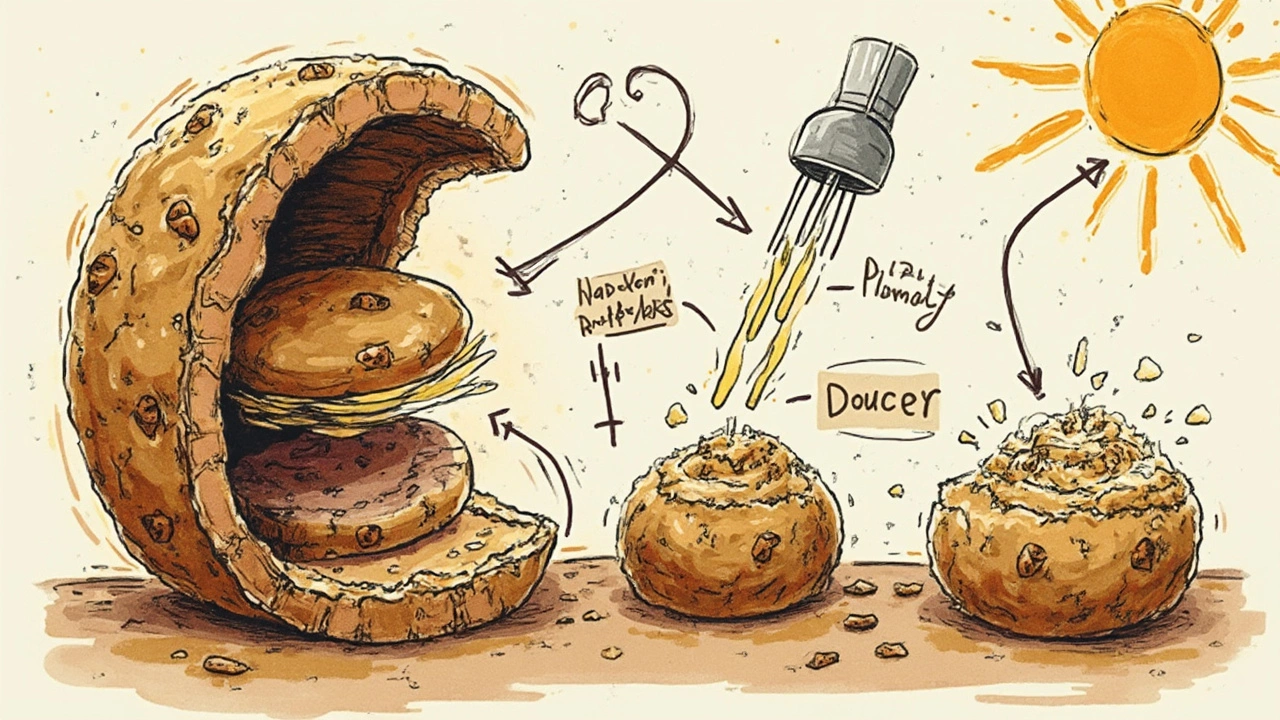
Cookie-Baking Hacks Nobody Told You
There’s a lot more to baking homemade cookies than just tossing everything together. The tiniest hacks can totally upgrade your batch, and some tricks still surprise even seasoned bakers.
You know that letting your dough chill in the fridge changes everything? It sounds optional, but it’s actually a secret weapon. Chilling the dough for at least 30 minutes stops your cookies from spreading too much, and develops deeper flavor—kind of like how soup tastes better the next day. King Arthur Baking Company says:
“Cold dough produces thick, bakery-style cookies because the fats stay cold longer, so they melt slower in the oven.”
If you want your cookies to be extra chewy, swap out some white sugar for brown sugar (think: a 50/50 split). The molasses in brown sugar locks in moisture for that perfect texture. Also, don’t skip the salt. Even if your recipe calls for just a pinch, it wakes up all the flavors, making sweet things taste even sweeter.
Here’s a handful of kitchen hacks that actually work:
- Always use room-temperature eggs—they mix better and help the dough come together evenly.
- Line your baking sheet with parchment paper. This stops cookies from sticking and makes cleanup easy.
- If you have a kitchen scale, use it! Measuring flour by weight means you don’t accidentally pack it and wind up with dry cookie dough.
- Underbake just slightly—pull out your cookies when the edges look set but the center’s still soft. They’ll keep baking from residual heat.
- Try adding a little cornstarch (a teaspoon or two per batch). It’s weird but adds tenderness for legendary, bakery-style texture.
- If you like super even cookies, scoop the dough with an ice cream scoop for identical shapes and bake times.
Fun side note: Data from a 2023 baking habits survey shows around 65% of people admit they eat some dough straight from the bowl. While it’s not the healthiest move (raw eggs and all), that irresistible flavor is a guilt most of us share!
| Hack | Result |
|---|---|
| Chill the dough | Thicker cookies, richer flavor |
| Brown sugar swap | Chewy texture |
| Room-temp eggs | Even mixture |
| Cornstarch addition | Softer, bakery-style cookies |
So the next time you pull out your cookies, remember: just a tiny change can mean the difference between flat, boring biscuits and the kind of cookie that gets everyone reaching for seconds.
How to Store and Keep Cookies Fresh
Nothing’s worse than biting into a homemade cookie and finding it dry or hard as a rock. If you want your homemade cookies to stay soft and tasty, storage really matters. Let’s clear up the most common mistakes and share a few tricks to keep those cookies irresistible.
First, wait until your cookies are totally cool before storing. Warm cookies make steam, and that just leads to soggy cookies and weird textures. Once they’re cool, pick your container based on cookie type:
- Chewy cookies (like chocolate chip) love being in an airtight container. Add a slice of soft sandwich bread in the container—the cookies steal moisture from the bread, staying chewy longer.
- Crispy cookies (think biscotti or gingersnaps) need a looser fit. Use a cookie jar or tin with the lid just slightly ajar. Airtight containers make them lose their crunch.
If you’re stacking cookies, layer them with parchment or wax paper. This stops them from sticking or going mushy.
Got way too many cookies? Freeze them. Just pop the completely cool cookies in a freezer bag with a layer of parchment between each. Squeeze out as much air as possible (or use a straw to suck it out, old-school style). Frozen cookies keep for up to three months, and you only need about 10 minutes at room temp to thaw them.
| Cookie Type | Best Storage Method | How Long They Stay Fresh |
|---|---|---|
| Chewy | Airtight container + bread slice | Up to 5 days |
| Crispy | Loose tin/jar, not airtight | 3-7 days |
| Frozen | Freezer bag with parchment | Up to 3 months |
Keep your cookie storage away from strong smells like onions or spices—cookies soak those up fast and you end up with weird flavors. And don’t mix soft and crunchy cookies in the same box; the textures will mess each other up.
With these super-simple steps, your homemade cookies will taste like they just came out of the oven—even days later. That is, if you can resist eating them all at once.
Cookie Culture: Weird Facts & Must-Try Variations
Cookies aren’t just a snack—they’re a whole vibe across the world. Seriously, every country seems to have their own spin on homemade cookies. The classic chocolate chip was actually a kitchen accident back in the 1930s when Ruth Wakefield ran out of baking chocolate and used chopped up regular chocolate instead. The Toll House cookie was born, and it’s still topping the charts in the US.
Here’s one for the numbers nerds: Americans bake over 2 billion cookies at home every year, according to the Cookie and Snack Bakers Association. No joke—if you stacked all those cookies, you’d wrap the earth twice. That’s a wild appetite for something so simple.
| Cookie Name | Country | Key Ingredients |
|---|---|---|
| Snickerdoodle | USA | Sugar, cinnamon, cream of tartar |
| Alfajor | Argentina | Cornstarch, dulce de leche, coconut |
| Fortune Cookie | China (via USA!) | Flour, sugar, vanilla |
| Biscotti | Italy | Almonds, anise, flour |
| Melomakarona | Greece | Honey, walnuts, orange |
If you’re feeling a little adventurous in your cookie-baking game, try swapping in wildcards like matcha powder for a green cookie with a punchy flavor, or toss in a handful of crushed potato chips for a salty-sweet treat. These little switches can totally change your usual batch—sometimes for the better.
- Cookie Fact: Fortune cookies aren’t even from China—they were invented in California in the early 1900s.
- In Sweden, there’s a legit tradition called “fika,” where you slow down over coffee and—yep—homemade cookies.
- The world’s largest chocolate chip cookie was baked in North Carolina in 2003, and it weighed over 40,000 pounds. Not even kidding.
Want to try something totally different? Here are three must-try cookie ideas:
- Swap chocolate chips for chopped dried mango and coconut for a tropical twist.
- Go savory: Add cheddar cheese, crispy bacon bits, and chives for a grown-up snack.
- Stuff your cookie dough with a mini peanut butter cup before baking for a gooey center.
So next time you’re rolling out cookies, think bigger than chocolate chips. There’s a whole world of flavor combinations out there waiting for you to try—and maybe even a new favorite to add to your cookie jar.


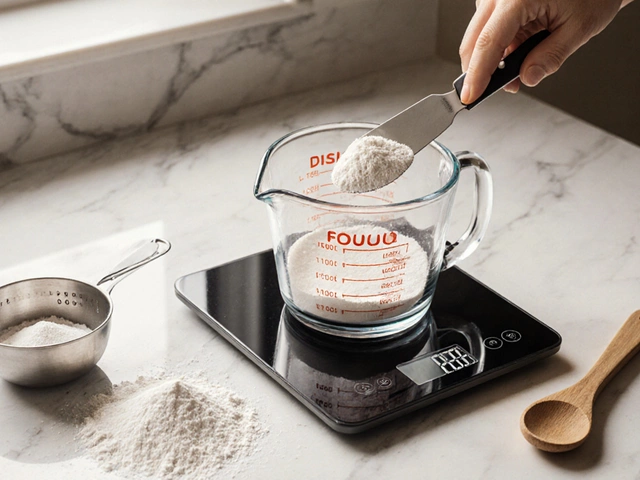
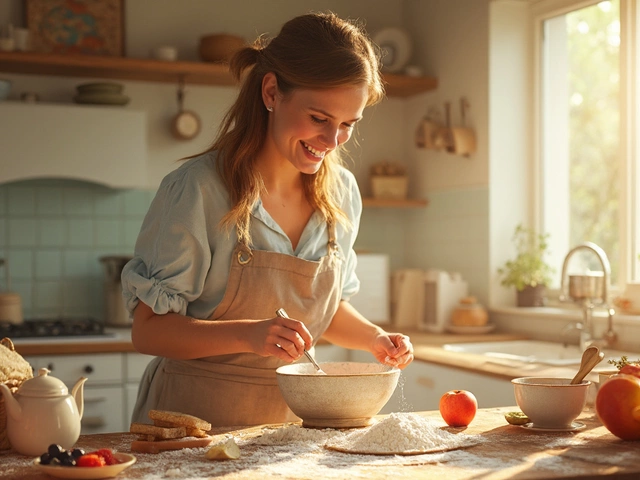
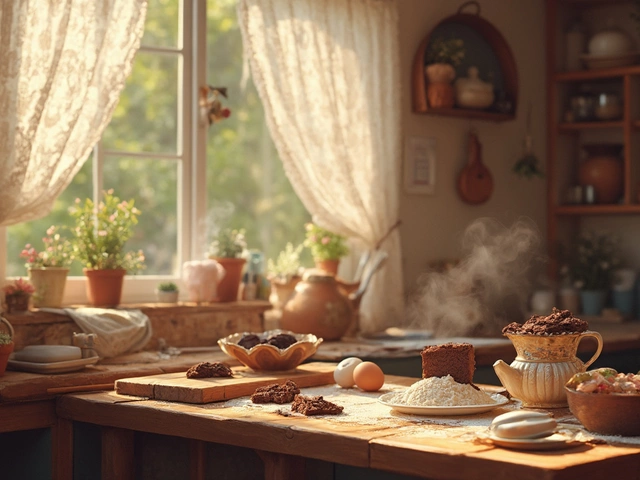



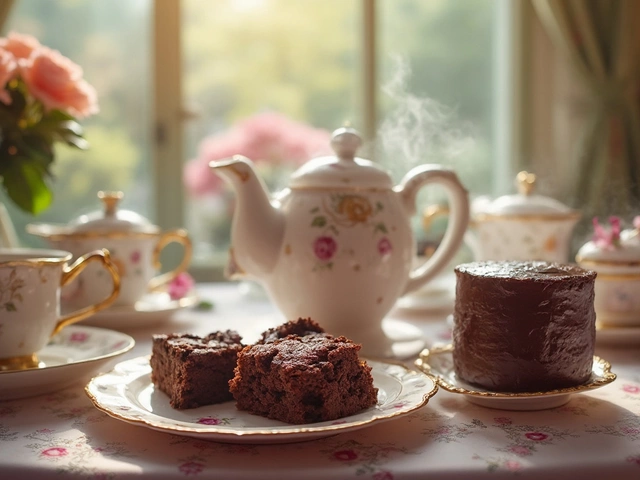
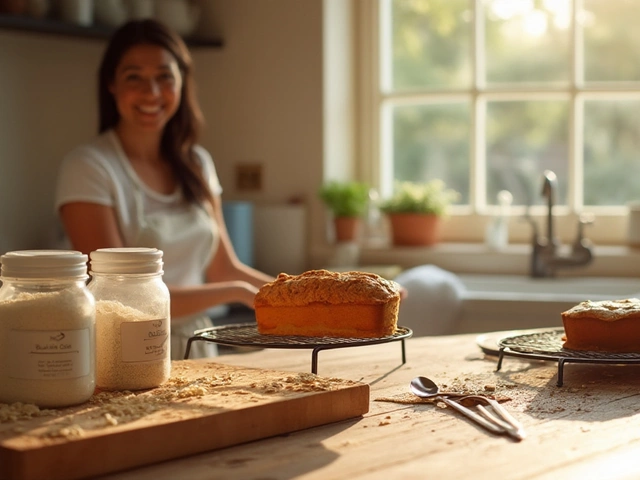

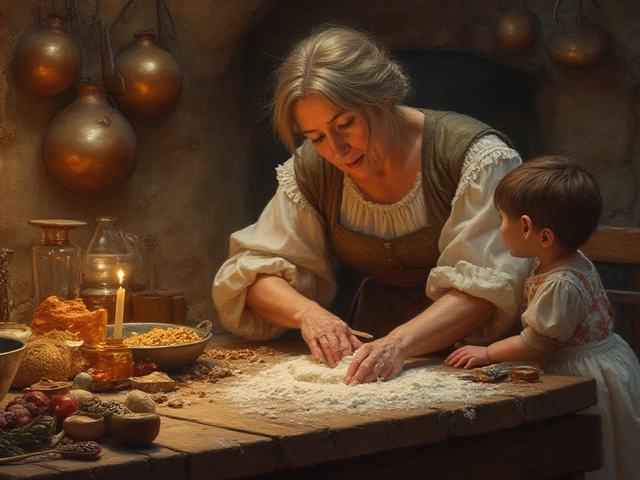
Write a comment